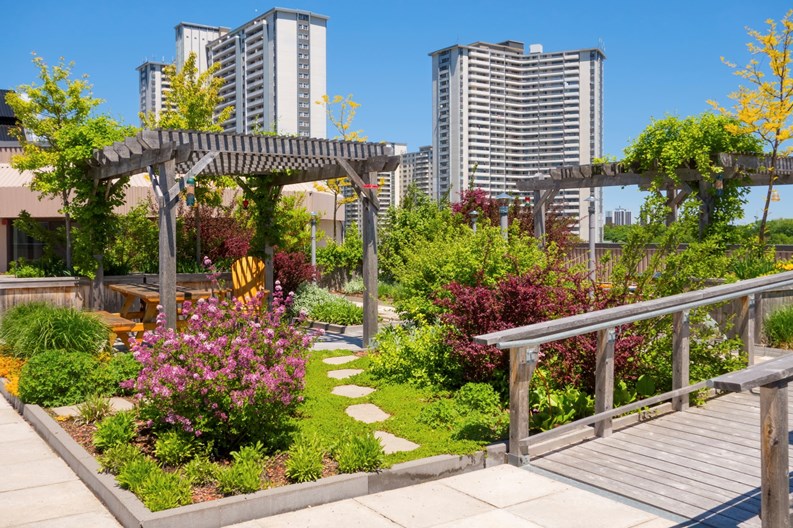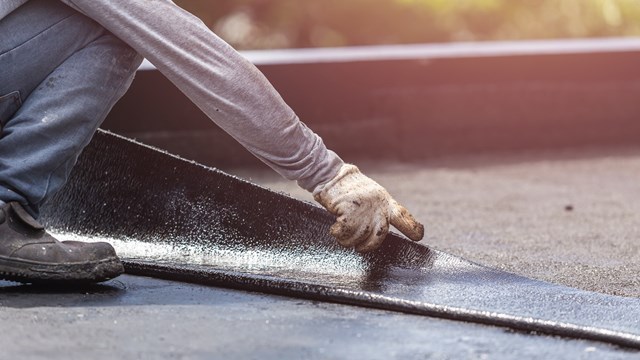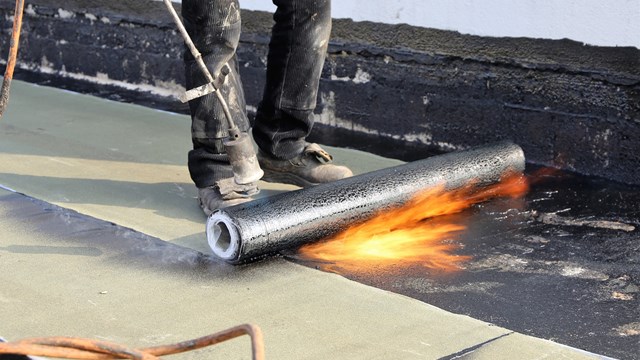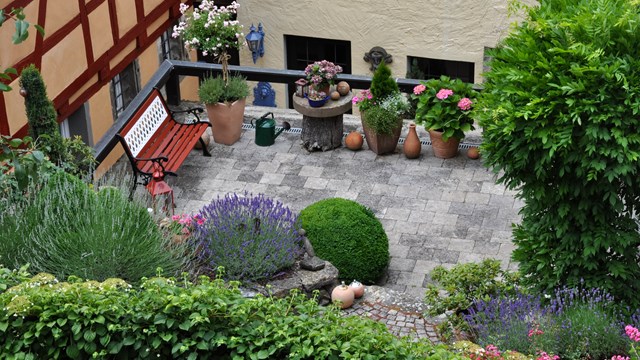With the bitter chill of winter finally giving way to the thaw, it’s come time again for green things to start shooting up from the ground and make the world a nicer place to live in. It isn’t just the ground where things grow though, over the last few years rooftop gardens and farms have become more and more popular. Since it has come time again for those with green thumbs to work their magic, if your building wants to get in on the fun here’s where you should start.
“If you're looking to install a rooftop garden there are a couple of important bits you'll need to tackle before you start dumping soil. Determining how you want to use your roof is a great first step. A green roof has many advantages: even an "extensive" or shallow-soil roof planted with sedum can insulate your home and preserve the waterproofing membrane on your roof,” says Cecilia de Corral, a project manager with Brooklyn Grange, which specializes in green roofs. “A deeper soil rooftop farm can provide you with your own personal veggie harvest, and be a place to gather friends, families, and neighbors. In order to install an "extensive" green roof with less than four-inch soil, you'll need a structural load of roughly 30 pounds per square foot. If you want deeper soil in which to cultivate vegetables, your roof should be certified to bear 65 pounds per square foot. And if you want to entertain up there, you'll need 100 pounds per square foot of capacity.”
The Weight of the Matter
You can’t just throw a bunch of soil on your rooftop though, even if it is flat and it looks like there wouldn’t be an issue. Before you do anything else you need to find out how much weight your rooftop can safely hold, and if it can’t hold what you need you’ll need to strengthen it.
“If you’re replacing the roof and there’s an existing roof assembly you can take the dead load off and credit how much you’re taking off,” says Ed Pon, director of architectural operations with Manhattan-based Howard L. Zimmerman Architects, PC. “If it’s a ballasted roof that contains pavers or gravel, you figure out how much that weighs, and then if you’re going to be putting a green roof down you need to know what the weight of the new membrane and what the weight of the green roof will be.”
After you figure out if your roof needs strengthening or not, de Corral notes, “A couple of other things to think about: how do you access the roof, how much sun do you get, and most importantly where are you getting water from?”
De Corral says, “A strong design that takes into account the amount of sunlight you get in the Spring and Summer is a great start. From there you can determine the square footage of your roof so you can approximate the quantity of green roofing material and soil you will need. There are a variety of green roof systems but as long as the one you choose blocks roots from penetrating your roof membrane and allows for proper drainage, you're in good shape.”
Beware of Sun and Wind
While the strength of the sun is one issue, if it’s too strong you might need to put up shades to protect your plants and keep the soil from drying out, the wind can be the biggest hurdle to overcome.
“The main difference between planting on a roof and planting on the ground is wind. You may notice soil eroding and plants getting whipped around,” says de Corral.
There are companies out there that look to deal with this issue by selling seeds designed to not be affected by the high winds that can hit a rooftop, but outside of that the care for your garden or rooftop farm is exactly the same as you’d expect. Just make sure everything’s getting watered and is getting enough sun, though not too much.
John Zurz is a staff writer for The Cooperator.







Leave a Comment